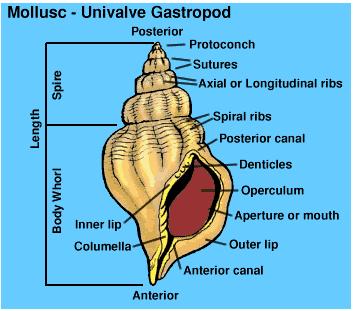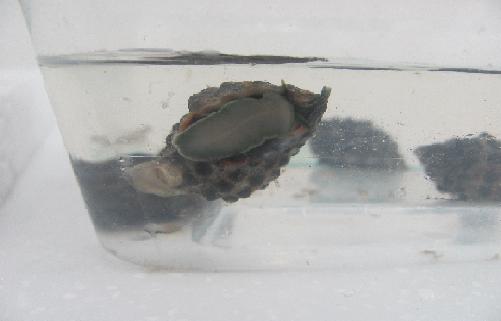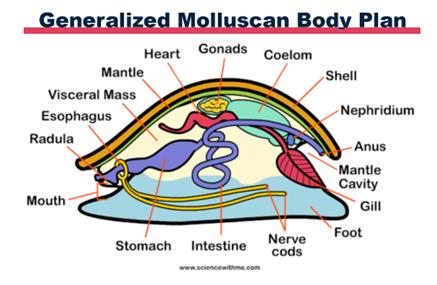Anatomy & Physiology
In gastropods the shell is a hollow cone coiled around what is known as a columella and it’s the central axis of the shell. (Ruppert et al. 2004)The large opening at the base of the cone is the aperture where the head or foot can be extended out from. The outside edge of the aperture is the outer lip and the other side of the opening is the inner lip. (Ruppert et al. 2004)The anterior canal is also called the siphon canal. The siphon is a portion of the mantle skirt that’s beside the head. (Ruppert et al. 2004) In Mulberry Whelks the siphon is elongated and is used to suck water into the mantle cavity. (Marine Species Dictionary 2013) The olfactory organ is located at the base of the siphon and the bipectinate osphradium is also located at the base of the siphon and branches off from a central axis. (Marine Species Dictionary 2013) They have a single auricle in the heart and also have a single pair of gill leaflets on one side of the central axis. (Marine Species Dictionary 2013) All gastropods have a foot, which is a mass of muscle and connective tissue that has a broad and flat sole that’s main function is locomotion. (Ruppert et al. 2004) The Mulberry Whelk has a radula that is used for feeding. The radula is used create a hole in the shell of their prey, cut up the animal and suck its prey through the hole. It is also believed that the snail uses sulphuric acid from its salivary glands to help dissolve the shell of its prey. (Davey 2000)

Figure 11. (Davey 2000)

Figure 12. The foot of the snail can be seen.

Figure 13. A generalized mollusc anatomy. |